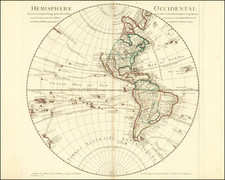Search
The North Atlantic is especially prone to mythical or elusive islands, a result of the rich seafaring cultures that border it and the intensity of the expansion and commercial trade of European empires in the Atlantic World.
Perhaps the most famous of the Atlantic mythical islands is Frisland, near Iceland, whose fascinating story and association with the Zeno Map is told elsewhere. Nearby to Frisland on many maps is Buss Island. This island originates in reports about Martin Frobisher’s third voyage, specifically George Best’s A True Discourse of the Late Voyages of Discoverie of a Passage to Cathaya (1578). One of Frobisher’s ships, the Emmanuel, which was a busse, hence the island’s name, supposedly sailed along the island on its homeward journey in 1578. Hakluyt included a description of the island in his Principal Navigations (1598). It was variably sighted and sought by seventeenth-century navigators and John Seller charted it his English Pilot (1671). The Hudson’s Bay Company (HBC) sent an expedition in search of it in 1675, but they found nothing. By the eighteenth-century, cartographers supposed the island was fabulous or sunken, demoting it to a navigational hazard. A further voyage in 1791 finally proved its non-existence.
Hy Brasil is an enduring Atlantic chimera emerging from Celtic folklore. It ranges on maps from just off the west coast of Ireland to the area around the Azores. The island was initially described as a rich paradise not unlike Atlantis; it emerged from the depths for a short period and then would disappear. It started to appear on portolan charts in the fourteenth century and continued to be a stalwart of maps and charts into the nineteenth century. The island was the subject of a fanciful pamphlet by Richard Head in 1675. Despite no accurate reports of its whereabouts, the island appeared on Admiralty charts and other reputable maps for centuries, usually in the latitude of 51°N and at a longitude of 17°W.
A final island of note is that of St. Brendan. Like Hy Brasil, this island is also connected to Irish lore. St. Brendan, hearing of a promised land from St. Barrind, decided to take a group of monks to find the paradise in the sixth century. After 43 days the monks landed on a deserted island. This is only the first of a series of islands which they encounter, before facing a frozen sea. They have more adventures and eventually return home. The island itself initially appeared near the Canary Islands, but by 1570 Abraham Ortelius placed it near Newfoundland, where it stayed until slowly disappearing from maps in the seventeenth century.


